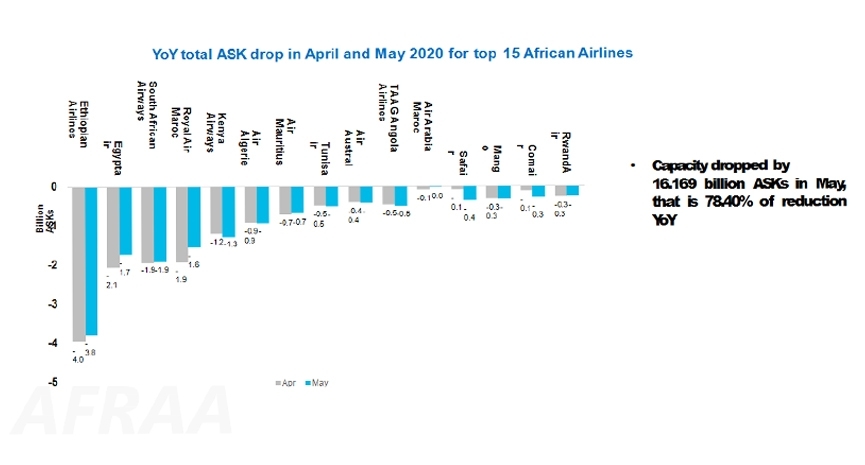AFRAA data shows revenue loss of over $8 bn for airlines in 2020
As per an assessment made in May 2020, the African Airlines Association (AFRAA), has released an analysis of the impact of Covid-19 on the airline industry in Africa which reveals an estimated revenue loss of $8.103 billion for African airlines for the year 2020.

June 02, 2020: As per an assessment made in May 2020, the African Airlines Association (AFRAA), has released an analysis of the impact of Covid-19 on the airline industry in Africa which reveals an estimated revenue loss of $8.103 billion for African airlines for the year 2020. Capacity dropped by 16.169 billion available seat miles (ASKs) in May, a 78.40 percent of reduction YoY.
The analysis is the first in a series of studies that will be published by the association examining the toll of the pandemic on Africa’s air transport sector.
The impact assessment analysis further shows a 90.3 percent YoY passenger traffic reduction for the month of May; recovery is expected to start from Q3 2020 with domestic operations, followed by regional and intercontinental flights.
Passenger revenue dropped to $0.403 billion in Q1 2020, i.e. 13.8 percent YoY. More important impact will be seen in Q2 2020 of $2.740 billion, i.e. more than 90.2 percent YoY and the recovery is expected to start from Q3.
Since March 2020, shortage of cargo plane capacity was due to:
• Demand derived from the Covid-19 crisis including medical supplies and essential goods
• Significant reduction in belly cargo capacity due to suspension of passenger flights owing to border closures by states during the Covid-19 pandemic period.
Since the onset of the crisis, AFRAA whose mission is to serve African airlines and champion Africa’s aviation industry has taken various initiatives to ensure the sector’s resilience to the pandemic and for post recovery efforts. Key among these initiatives is the AFRAA recovery plan that defines a framework of various areas of intervention measures to be taken as part of urgent, immediate, and consistent actions for the survival and rebound of the industry.
AFRAA is also working closely with leading aviation industry organisations under the framework of the high level task force that is undertaking various actions to ensure that the African civil aviation industry is well positioned on a strong trajectory for recovery during and post Covid-19.


